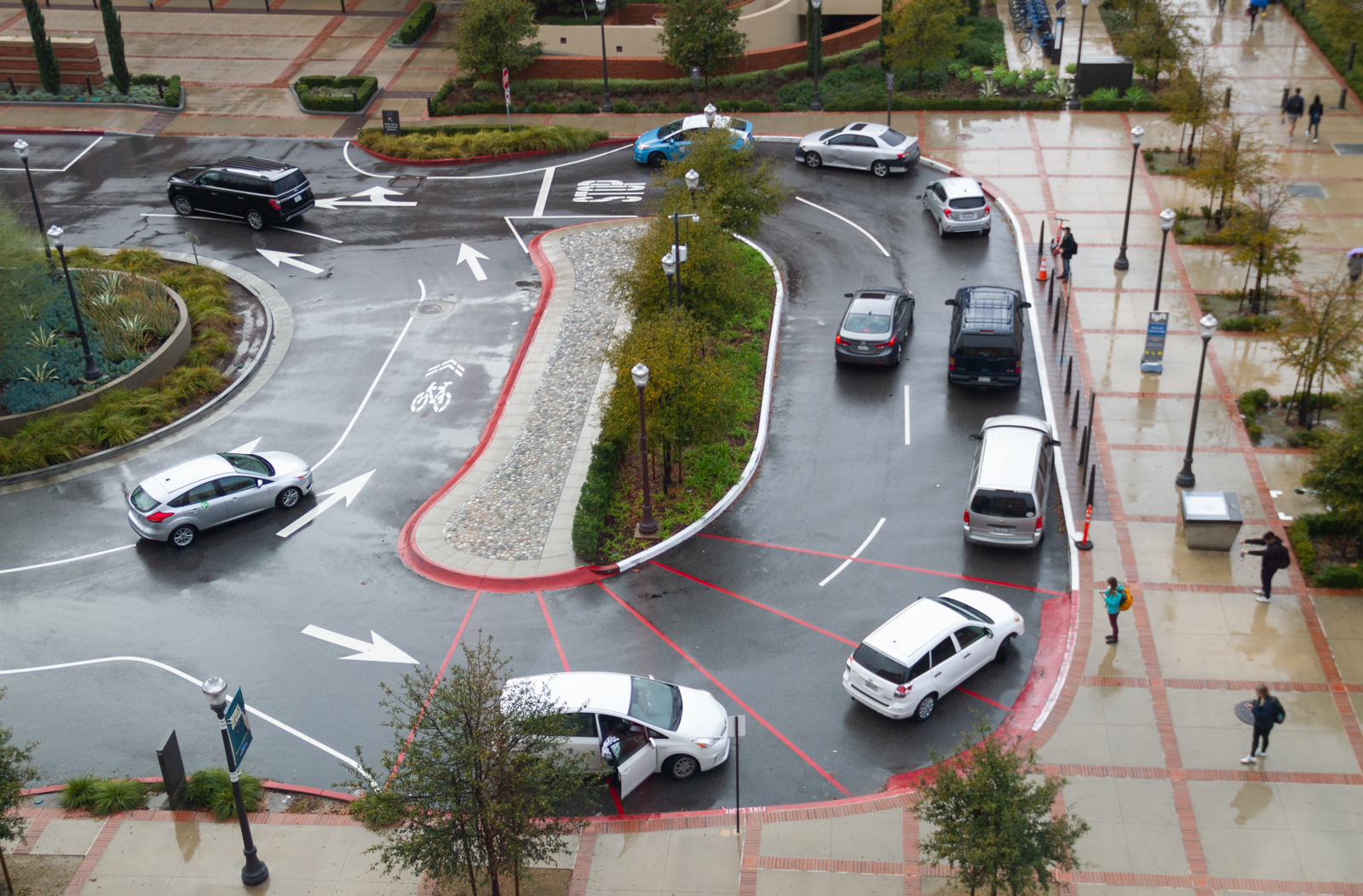Authorities must set up safety regulations for ride-hailing, e-scooter employees

Uber and Lyft introduced Los Angeles to the realities of the gig economy. But their growing usage and integration into daily life pose numerous challenges that have yet to be considered. (Tanmay Shankar/Daily Bruin)
By Pravin Visakan
March 6, 2019 10:06 p.m.
School seminars and parental advice were always big on one fact: Don’t get into cars with strangers.
Today, it’s just another way to get around. But these services still come with dangers – labor and safety ones.
Los Angeles has taken some initial steps to take over-reaching companies to the curb. On Feb. 28, the Metropolitan Transportation Authority voted to study the effects of Uber and Lyft on traffic congestion. Over two years, the studies will help officials gauge the potential of a tax on these services to help promote alternative forms of transport and relieve traffic.
In addition, with the growing popularity of shareable electric scooters, bikes and other dockless transportation devices, the city introduced a 16-month pilot program in September to gather data on new regulations. The city instituted a cap on each companies’ vehicles, a 15 mph speed limit and a hotline to report misplaced scooters. Scooter companies are responsible for responding to these reports.
However, these regulations only address a fraction of the problems these services produce. Worker compensation and protections are still lacking, years after app-based sharing companies came to prominence. The rules surrounding the operation, management and liability of dockless vehicles are unclear and the safety standards of these and other gig-economy elements are not yet set in stone.
Municipal, state and federal efforts to regulate these new industries need to be more forward-thinking, instead of tackling problems as they come up.
Many of those problems arise with the workers these services employ. Chargers – the people who collect, charge and place dockless vehicles for a small fee – have not had the benefit of certain protections under the law.
Typically, chargers are paid per device charged, with increased rewards based on the difficulty of retrieving a device. This system does not provide for a secure livelihood. This is especially relevant under LA’s recent pilot program, which requires dockless device operators to respond within two hours to reports of improperly placed vehicles. If these companies want to leverage their existing workforce, they should be obligated to provide for them.
Indeed, the state has grappled with this issue before. In April, state courts tightened the standards by which employees could be considered independent contractors, who don’t have all the benefits of full-time employees. However, problems still exist. For example, the average minimum wage of drivers is still below LA’s minimum, and doesn’t take into account associated expenses of operation.
In other accounts, working conditions for chargers can be unsafe. Many set out to retrieve vehicles in dangerous areas, like the bottom of canyons, and reports said competition could turn fierce. Some workers were actively threatened when they beat someone else to a scooter. In other cases, chargers sometimes ride unsafely in order to transport many scooters at a time. This form of employment is too unregulated to form an evenhanded part of LA’s transport infrastructure.
The rush to enter the market early has also resulted in dangerous technical problems. Recently, some Lime scooters were found to have a mechanical bug that resulted in premature braking and injuries. Though these vehicles are subjected to general statewide safety testing and standards, they are still being deployed at a large scale with dangerous defects. These scooters are being used at a larger scale than before, and state standards for testing and safety need to be more rigorous.
While the scope of issues posed by these services is large, legislative barriers do exist. For example, many ride-hailing regulations fall under the purview of states’ utilities commission, and not municipal governments.
Companies have also argued that additional regulations place burdens on them that could halt growth. The benefits of the transport gig economy are also potentially held back by the requirement that riders have a smartphone and access to online payment.
“New York City, for example, put a cap on ride-hailing,” Brown said. “The effects of it are uncertain, but in general people are quite concerned with what that will mean for equity.”
However, governments can still maintain the benefits of these services to society while preserving the rights they infringe upon. For one, caps on dockless vehicles can be adjusted based on usage data in specific neighborhoods, as provided by companies. Similar transparency with regard to wages might help provide the first steps to issues with employment.
Getting into cars with strangers has become a normal part of everyday life, with a number of positive effects. But California has a long way to go until it’s safe for everyone.


